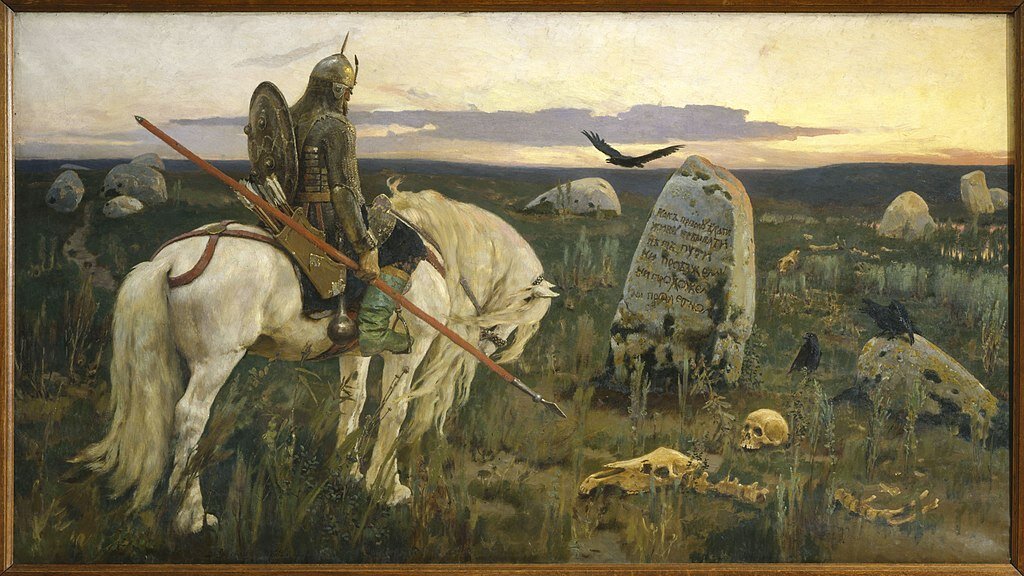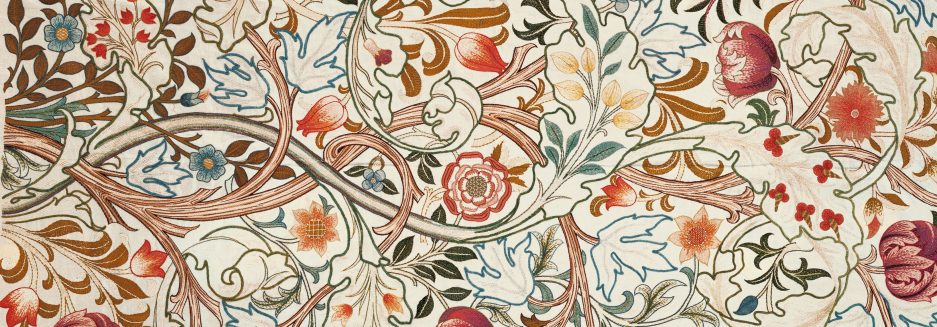
Back in November I shared the “Lament for the Rohirrim,” by J.R.R. Tolkien on Remembrance Day. Tolkien was a gifted poet, but because much of his poetry as we know it is contained in The Hobbit and The Lord of the Rings, it tends to be overshadowed by his substantial prose. However, a decade spent steeped in The Lord of the Rings has brought me into continual contact with it, and a semester-and-a-half spent messing about in Old English poetry revealed that Tolkien took inspiration from Old English for his poetry as well as his vocabulary.
The Wanderer is perhaps the most famous of the Old English elegies and Tolkien’s “Lament for the Rohirrim” contains substantial similarities to a section of it. To begin, here is the “Lament for the Rohirrim” as Aragorn recites it in The Two Towers,
Where now the horse and the rider? Where is the horn that was blowing?
Where is the helm and the hauberk, and the bright hair flowing?
Where is the hand on the harpstring, and the red fire glowing?
Where is the spring and the harvest and the tall corn growing?
They have passed like rain on the mountain, like a wind in the meadow;
The days have gone down in the West, behind the hills into shadow.
Who will gather the smoke of the dead wood burning,
Or behold the flowing years from the Sea returning?1
In The Lord of the Rings, Aragorn explains that these are lines from a poem about Eorl the Young. This selection bears significant resemblance to lines 92-96 of The Wanderer. The Wanderer is a long poem about an exile who has lost his ring-lord. In the latter half of the poem, he dwells on the passing of earthly joys and says,
Hwær cwom mearg? Hwær cwom mago? Hwær cwom maþþumgyfa?
Hwær cwom symbla gesetu? Hwær cwom seledreamas?
Eala beorht bune! Eala byrnwiga!
Eala þeodnes þrym! Hu seo þrag gewat,
genap under nihthelm swa heo ne wære.
Where is the horse? Where the young warrior? Where now the gift-giver?
Where are the feast-seats? Where all the hall joys?
Alas for the bright cup! Alas byrnied warrior!
Alas the lord’s glory! How this time hastens,
grows dark under night-helm, as it were not!2
Both Tolkien and the Anglo-Saxon poet have used the Ubi sunt “Where now” motif, which is common in Latin and Old English poetry. This is a topic for another day, but it is enough to mention that this Ubi sunt motif was not unique to this Anglo-Saxon poet, but rather a common poetic element.
Notice the distinct similarities in the first line, “Where is the horse? Where the young warrior?” which Tolkien rephrases as “Where now the horse and the rider?” The word mago “young warrior” is right next to the word mearg “horse,” so it is tempting to translate mago as “rider” like Tolkien did. In fact, the young warrior probably was riding a horse. Though the direct similarities end here, the inspiration continues. Tolkien lumps the themes of the hall, “feast-seats,” “hall joys,” and “bright cup,” under “Where is the hand on the harpstring, and the red fire glowing?” The “byrnied warrior” he inserts earlier as “Where is the helm and the hauberk?”
Tolkien then closes with the same image as the Anglo-Saxon poet: that of the days slipping into darkness—þrag…genap under nihthelm “time…grows dark under night-helm.” Tolkien rephrased and expanded this into “the days have gone down in the West, behind the hills into shadow.” Another translator phrased the line in The Wanderer as “time…slipped into nightfall,” which is a bit closer to Tolkien’s rendition.
As with Eärendil, Tolkien has taken a segment of Anglo-Saxon lore and grafted it into Middle-earth. Tolkien continually stated that he was creating a mythology for England, and that his Middle-earth was intended to be our own world—unlike Lewis’s Narnia. Tolkien’s use of real Anglo-Saxon poetry in The Lord of the Rings glues his Middle-earth every more tightly to our middangeard, securing his legends in the tapestry of our own.
Notes:
1J.R.R. Tolkien, The Two Towers, Book 3, Chapter 6
2The Wanderer, ll. 93-97, translated by Jonathan Glenn

How fascinating! Since the West is filled with significance in Tolkien’s Middle-Earth, I wonder if it means more in this poem than merely a reference to sunset. Also I really like the phrase “night-helm.” Is it a kenning?
LikeLike
Nihthelm “night-helm” is my favourite word in The Wanderer. It gives me little chills of delight whenever I read it in context. Yes, it is a kenning.
LikeLiked by 1 person
I wonder what the thought process behind the kenning was? The word “helm” mystifies me in this context, unless it refers to the darkness inside a helmet.
LikeLike
The kenning does refer to the darkness inside the helm. “Dark under the cover of night” is another translation of “genap under nihthelm.” Think of night and eventide as someone slowly covering the earth with a helmet.
LikeLiked by 1 person